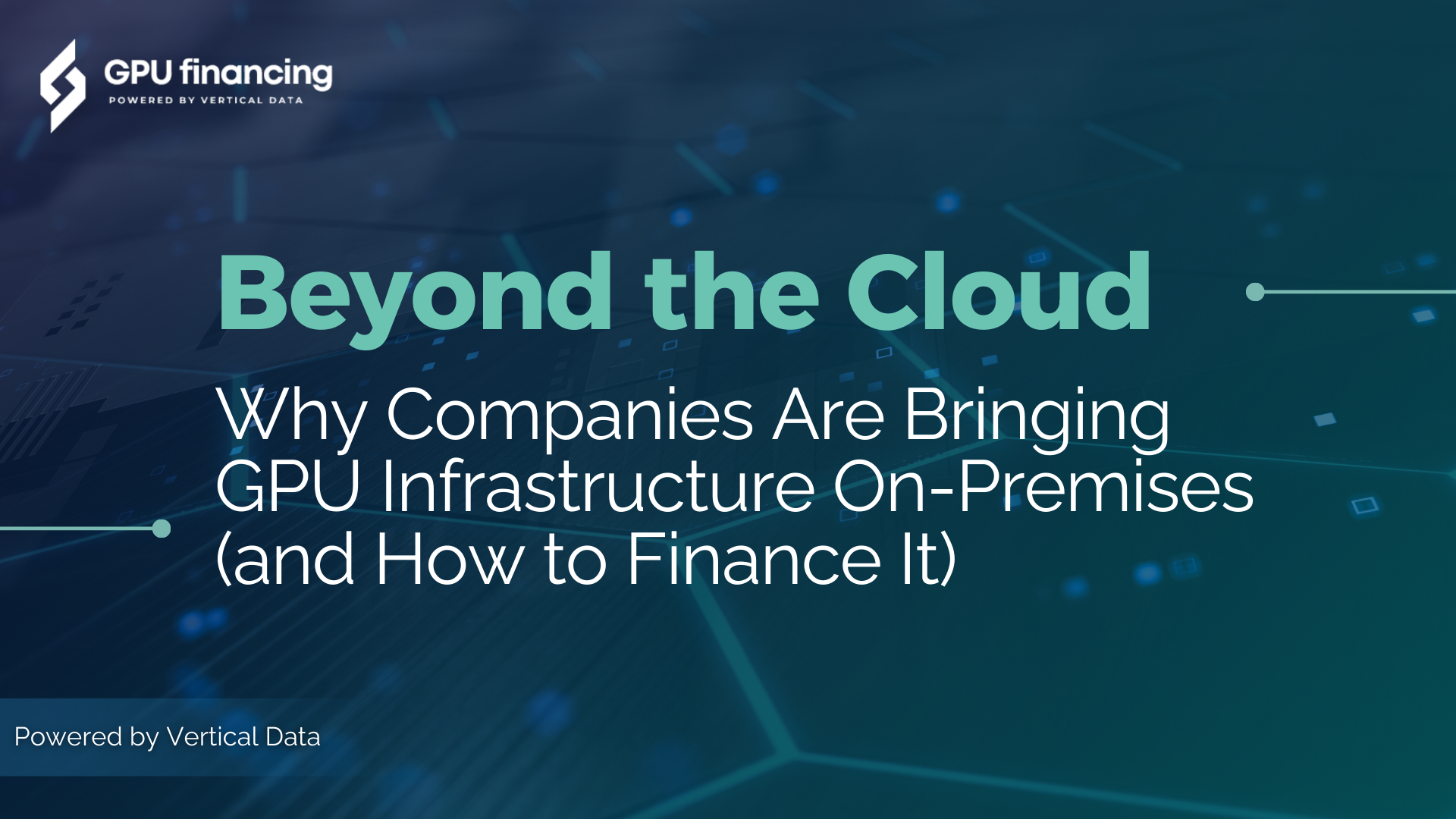Introduction
For years, cloud computing has been the dominant paradigm for businesses seeking scalable and flexible IT infrastructure. The promise of on-demand resources, reduced upfront costs, and simplified management made cloud platforms an attractive choice for a wide range of applications. However, as the demands of artificial intelligence (AI) and machine learning (ML) workloads continue to grow, particularly those involving Graphics Processing Units (GPUs), a notable trend is emerging: a strategic shift to bring GPU infrastructure back on-premises. This move, often driven by specific performance, cost, security, and control considerations, presents unique challenges and opportunities, especially concerning financing.
The Case for On-Premises GPU Infrastructure
While cloud GPUs offer undeniable advantages in terms of immediate scalability and reduced capital expenditure, several factors are compelling organizations to reconsider an on-premises approach for their high-performance computing needs:
- Performance and Latency: For highly intensive AI training, real-time inference, and complex simulations, every millisecond counts. On-premises GPU setups can offer significantly lower latency and higher throughput compared to cloud environments, as data does not need to travel across networks to remote data centers. This direct access to hardware enables optimized performance and faster iteration cycles.
- Cost Optimization at Scale: While cloud services can reduce initial CapEx, the operational expenses (OpEx) can escalate rapidly with sustained, large-scale GPU usage. For companies with consistent and heavy GPU workloads, the cumulative cost of cloud subscriptions can eventually surpass the investment in owned hardware. An on-premises solution, despite its higher upfront cost, can become more cost-effective over the long term, offering predictable expenses and avoiding variable cloud billing.
- Data Security and Compliance: Industries dealing with sensitive data, such as finance, healthcare, and government, often face stringent regulatory and compliance requirements. Keeping data and computational infrastructure on-premises provides greater control over security, privacy, and adherence to industry regulations. This can be crucial for maintaining data sovereignty and mitigating risks associated with third-party cloud environments.
- Customization and Control: On-premises infrastructure offers unmatched control over hardware configurations, software stacks, and network architecture. Companies can tailor their GPU systems precisely to workload requirements, optimizing for specific AI frameworks, libraries, and custom integrations. Such customization is often limited in multi-tenant cloud environments.
- Intellectual Property Protection: For companies developing proprietary AI models or working with highly confidential algorithms, maintaining physical control over the hardware where these models are trained and deployed can be critical for intellectual property protection.
Financing On-Premises GPU Infrastructure
The decision to invest in on-premises GPU infrastructure, while offering significant long-term benefits, often involves substantial capital outlay. Flexible financing solutions can play a pivotal role by transforming a large upfront investment into manageable operational expenses or structured payments. Key options include:
- Large-Scale Equipment Leasing: For businesses requiring significant volumes of GPU infrastructure, leasing programs provide access to hardware without immediate capital expenditure. These programs typically feature flexible terms and competitive rates, and they can be structured to accommodate deployments across data centers, cloud, or hybrid setups.
- Long-Term Equipment Financing: This solution allows businesses to spread the cost of GPU hardware over extended periods, enabling faster deployment and better budget management. It helps mitigate large upfront investments, often includes lease-to-own models, and provides predictable monthly payments with the flexibility to scale as needs evolve.
- Purchase Order & Receivables Financing: This option provides advance funding based on purchase orders or signed deals, allowing companies to cover production costs while waiting on receivables. It is particularly beneficial for businesses with long sales or deployment cycles, ensuring operations continue without cash flow delays.
These financing solutions enable businesses to acquire the computational power needed to drive AI initiatives without compromising financial agility. By carefully evaluating the total cost of ownership (TCO) and aligning financing with strategic objectives, companies can make informed decisions about their GPU infrastructure.
Conclusion
The pendulum of IT infrastructure is swinging, and for many AI-driven enterprises, on-premises GPU infrastructure is becoming an increasingly attractive alternative to pure cloud deployments. Driven by the need for superior performance, predictable costs at scale, enhanced security, and greater control, companies are making strategic investments in their own hardware. Flexible financing solutions are crucial enablers of this shift, providing financial pathways for businesses to build robust, high-performance AI capabilities in their own data centers. As AI continues to evolve, the ability to strategically deploy and finance GPU infrastructure will be a key differentiator for innovation and competitive advantage.
